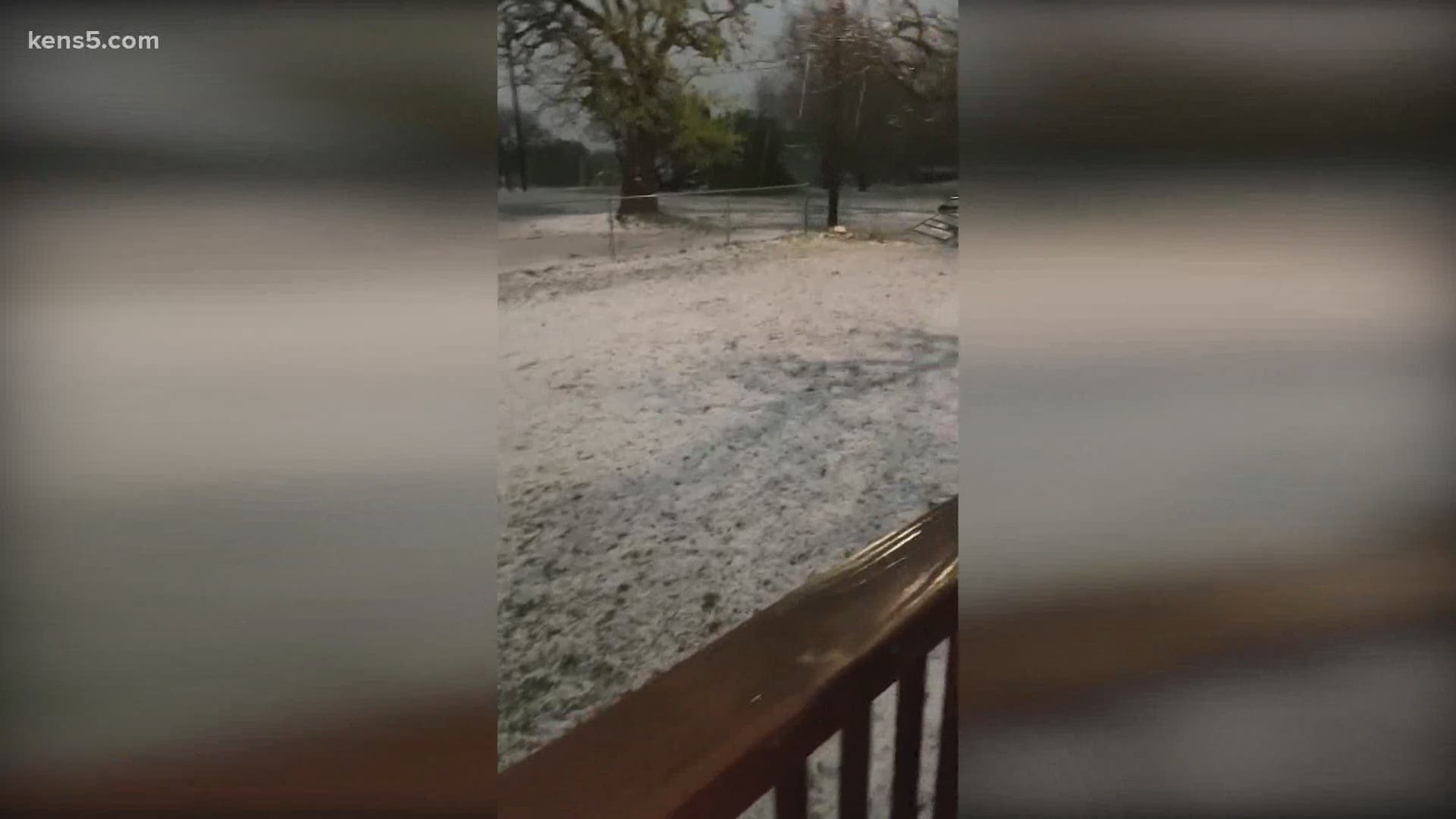SAN ANTONIO — Thousands of San Antonio households are without power after the storms rolled through Bexar County Wednesday night. As of 2:05 a.m. Thursday, 13,921 residents are without power as CPS Energy works to repair 298 active outages across the city.
Flooding remains a concern in Bexar County after the San Antonio area saw 2.73" of rain since Saturday. An Areal Flood Advisory for Bandera and Bexar County was in effect until 12:30 a.m. Thursday.
Nearly a dozen roads are closed throughout Bexar County due to high water in crossings, as of 1 a.m:
- Devine Rd. at the Olmos Creek crossing in Alamo Heights
- Blue Wing Rd. near 37 in southeast Bexar County
- Contour Drive near McCullough Ave. in Olmos Park
- Gass Road South of Culebra Rd.
- S Hausman Rd. near Steubing Elementary School
- Leslie near Braun Rd. in northwest San Antonio
- Maltsberger Ln. near 281/Wurzbach Pkwy
- NE Entrance Rd. near Wurzbach Pkwy by McAlister Park
- O'Connor Rd. near the intersection of Lookout Rd. in Valley Forge
- Old Blanco Rd. near Hardberger Park
Damaging hail was the biggest concern with the severe weather Wednesday. The storms that moved through the Hill Country and into San Antonio brought sizeable hail to the central and south Texas area.
SEVERE WEATHER 101
When severe weather threatens the area, it is important to know what risks a storm can bring and what you should do to stay safe.
One of the most important things to know is where you are located on a map, so when a watch or warning is put into place, you can identify if you are at risk. When the National Weather Service puts out warnings, they are county-based and sometimes include cities as well. It is important to know where you live in the county and that you can identify it on a map.
It is also important to know the difference between a watch and a warning. A watch means that conditions are favorable for something to happen, but a warning means that something has developed and it is important to take action.
So, what would cause a thunderstorm to be qualified as a "severe" thunderstorm?
Hail that is one inch large is also considered to be about the size of a quarter.
Another ingredient that would lead to a storm becoming severe is if winds are 58 mph or greater.
Winds at this strength could cause damage to roofs and could even cause trees to be knocked down.
Finally, if a tornado is present inside a thunderstorm it would qualify the storm as becoming severe.
In this instance, a tornado warning would be issued.
A tornado watch can be issued for an area if strong storms are expected, and if the storms bring the risk for tornadoes, but not all storms include the threat for tornadoes. The ingredients in the atmosphere for a tornado to form are not always there when storms are present.
If the area you are in is ever under a tornado warning, it is important to know where you should go inside your home.
Head to the lowest, interior room of your home. The basement would be best, but if you don't have one, head to the first floor of the home and get away from exterior walls, or walls that lead to the outside of the home.
It is also important to stay away from glass. The more walls you can put between you and the outside, the better.
While lightning can be frequent in storms and very dangerous, it does not lead to a storm being qualified as severe.
Remember, when thunder roars, go indoors.
Storms can also lead to flooding. Flooding may not cause a storm to be labeled as being severe, but it is the deadliest kind of weather.
South Texas is known to have major flood events every few years, so it is important to use caution and to always stay out of floodwaters. Remember, turn around, don't drown.
Entering flood water is very dangerous as you can be swept off of your feet and you don't know what could be in the water that could hurt you.
The best thing you can do to be ready for severe weather is know what you will do in the event it strikes where you live.
Make sure your family has a severe weather action plan.
Have a place everyone goes inside your home and keep supplies there, such as food, medication, batteries, and flashlights.
Weather Minds Classroom: Take a class in Severe Weather 101
Follow the KENS 5 Weather Team
Don't forget you can download the KENS 5 app for the latest news and weather information each day while you are on the go.



